Beelink GTR7 Pro Internal Hardware Overview
Getting inside is like other modern Beelink units. The bottom panel is removed and inside we get an airflow shroud. In this generation, we still see a fan and a M.2 SSD heatsink, but we lose a 2.5″ SATA SSD/ HDD mounting option.
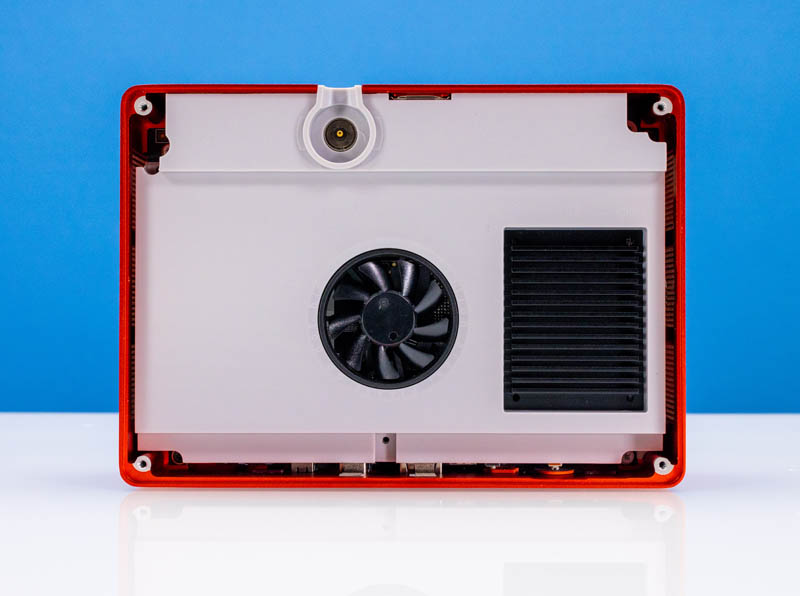
This airflow shroud has the fan and power components onboard and takes another three screws to remove. We wish Beelink came up with a single-screw version of its cover as two of the screws are recessed and a pain to access.
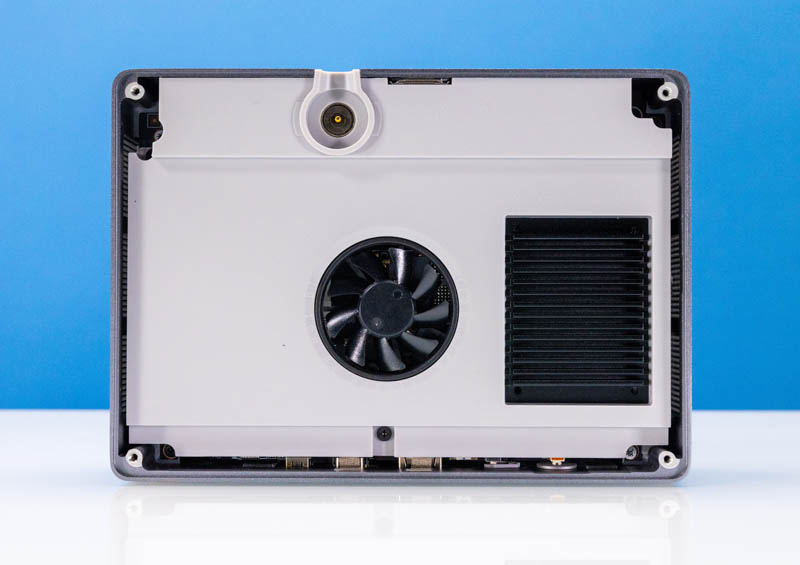
Inside, we get a very typical layout that makes servicing components easy. One other small note that many gloss over is the labeling. Like many of the large OEM systems, these now have labeling that says that a slot is for DDR5 memory, or a M.2 WiFi 2230 card. That may not seem important, but it is a small item on the quality side that is appreciated.
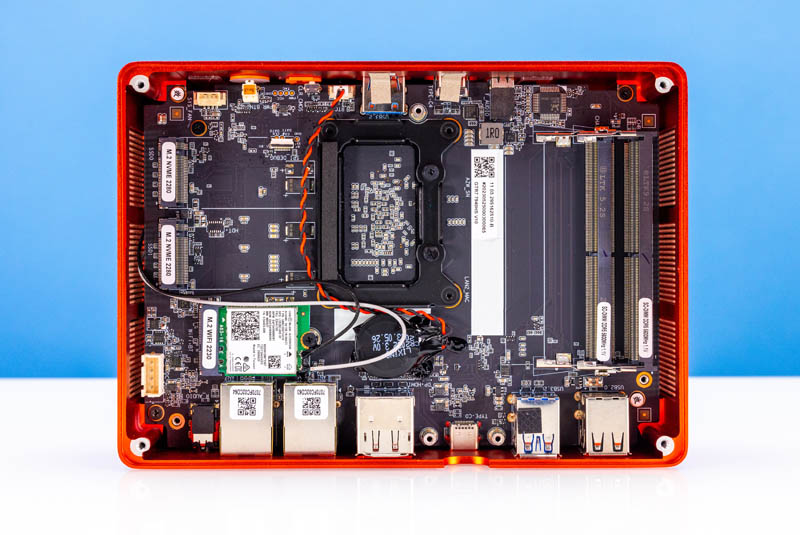
Here is the system populated:
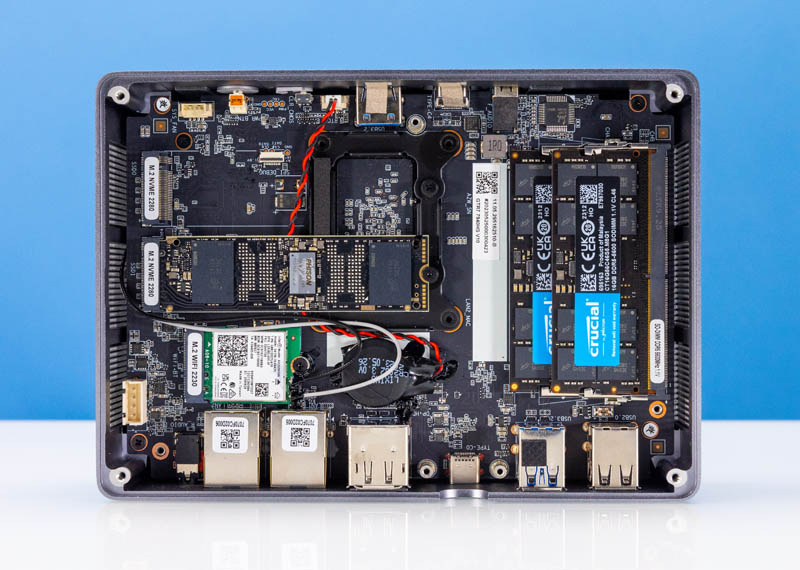
Memory is dual DDR5 SODIMMs. Our system came with two 16GB Crucial DDR5-5600 for 32GB total.
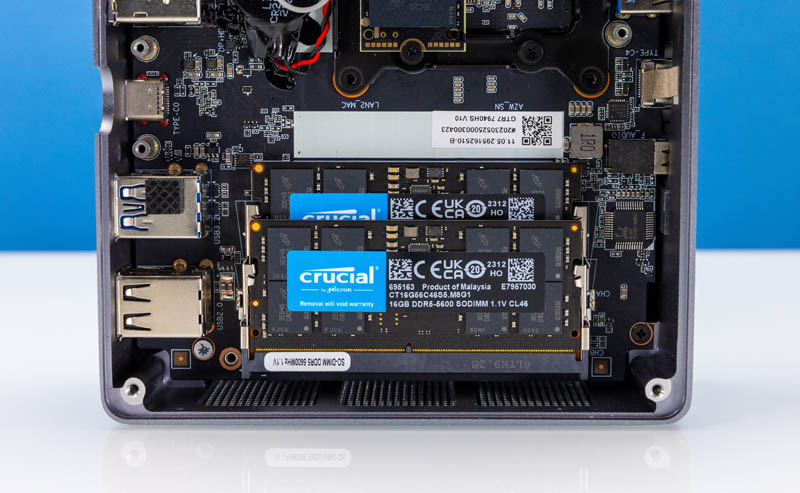
There are two PCIe Gen4 x4 PCIe slots for NVMe storage. By default, there is only one drive installed, but it is straightforward to install a second M.2 NVMe SSD here. All of the components in our 32GB of RAM and 1TB of storage configuration were from Crucial.
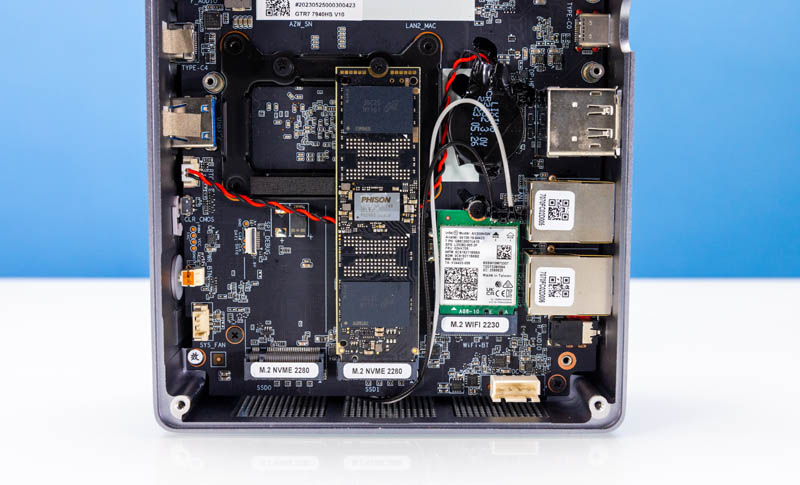
The SSD was the Crucial P3 Plus. Will reviewed the Crucial P3 Plus 1TB PCIe Gen4 NVMe SSD and it is a fairly low to low-mid-range SSD solution. You can look these up on Amazon (Affiliate link), but these are often some of the lowest-cost PCIe Gen4 NVMe SSDs you can get. They typically run very cool which is good for a mini PC. It is also why we used them in the Asustor Flashstor 6 FS6706T and the 4TB models in the Asustor Flashstor 12 Pro FS6712X review.
The WiFi solution is the Intel AX200 so this is a WiFi 6 and not WiFi 6E machine. That is another area we wish Beelink did a small upgrade to an AX210 for WiFi 6E on the Pro model.
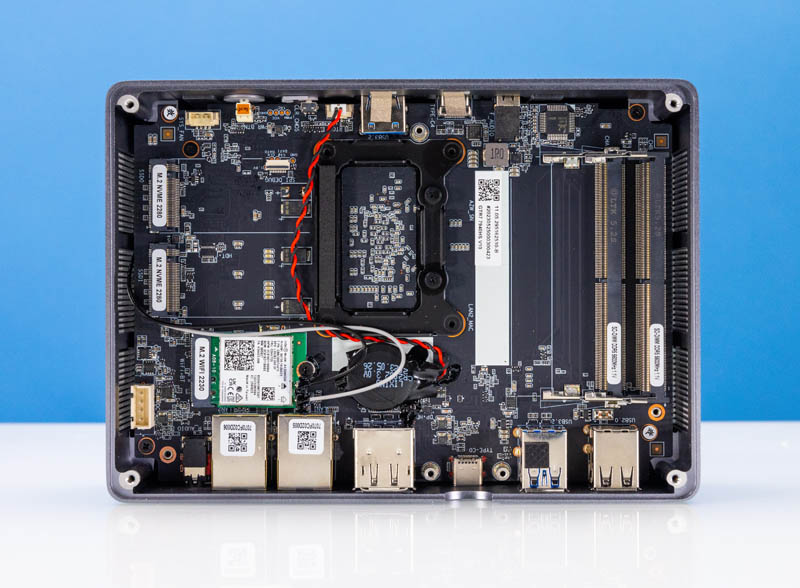
The AMD Ryzen 9 7940HS is on the other side of the motherboard, but it is not user serviceable. Overall, Beelink now has a very good internal setup, with a small exception.
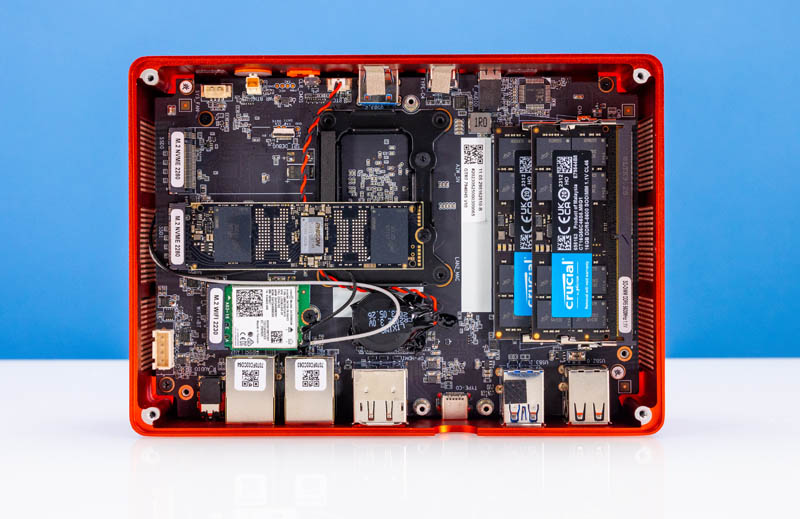
The SSD heatsink cooler barely covers part of the Phision controller on the SSD, and one of the two NAND packages you can see here. Beelink would do well to re-design the entire cover to actually cover the entire SSDs with the heatsink and make it easier to remove. Note, because of how we could get these to sit for photos the image above and below are standing on opposite sides of the chassis.

Next, let us take a look at the Ryzen performance.

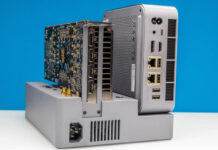


So just wondering: are these usb 4 ports all usable at the same time with the advertised 40gbps speeds? So 1 quick external SSD – 1 eGPU enclosure and 1 usb 4 dock for example without losing any performance.
Still waiting on a 7945(HX or 3DHX) model.
@Jay – Phoenix APU’s have (2) USB4 interfaces in the CPU. So far, AMD provides 16 of PCI Gen 4 lanes to each USB4 controller.
So if this has (4) ports, then 2 ports would have to be sharing the same 16 lane controller.
Unless Patrick or someone on STH knows different, there are no eGPU docks that can saturate a USB4 port. Those TB3 docks use PCIe Gen 3, either 4 lane or 8 lane bridge chips, even if the GPU slot is 16x.
Unfortunately, it’s sold out now.
7940hs is the first cpu I think can hold it’s own in the kind of form factor. I bought a 7940hs notebook several weeks ago. Coming from 5600x & 5900x machines for compiling c++ code, python work, and such. It is a very capable cpu.
AMD should be selling this CPU into the desktop market hard, for mini and full ATX. At 45W or so these are damn compelling processors
Do these support ECC? The chipset looks like it does based on AMD reference, but not sure if these do. Would this make a strong tiny mini micro Proxmox cluster? 2x nvme ssd + 32gb or 64gb ecc RAM seems like it would support zfs ok.
@ Johnson – I think you have to go to the hidden advanced BIOS menu to turn on ECC support.
Does the unit or cpu gets hot quickly under load? Tried their older 5800H model but runs too hot. Thanks
@spuwho Thanks for the answer! Nice to know those docks and eGPU’s can’t really saturate those ports. Sharing the same controller makes lots of sense then.